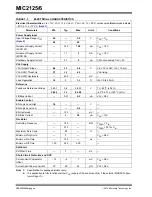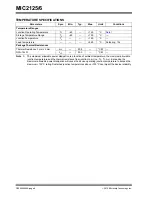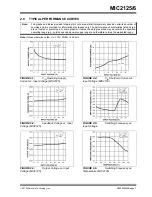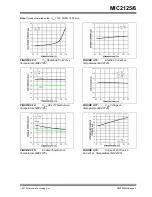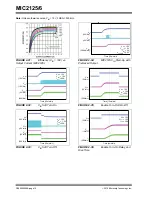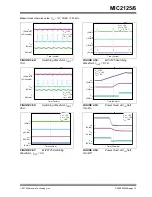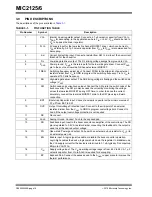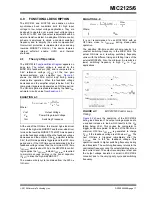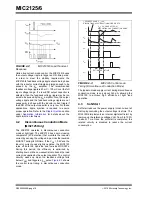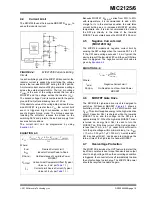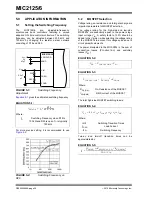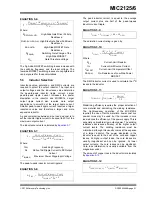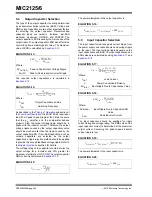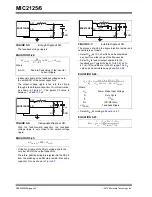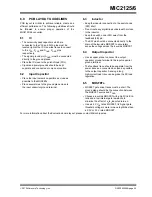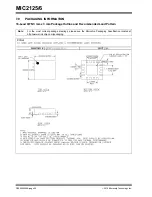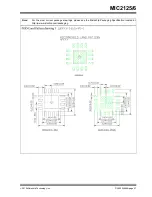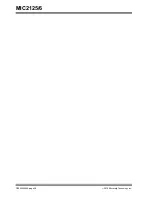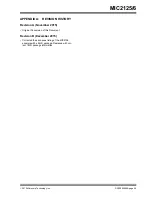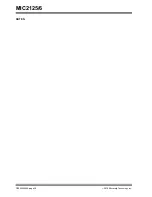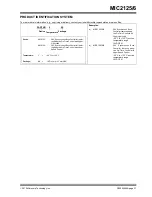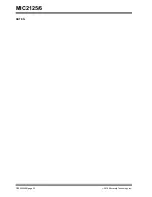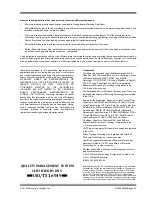
MIC2125/6
DS20005459B-page 18
2015 Microchip Technology Inc.
FIGURE 4-2:
MIC2125/6 Load Transient
Response
Unlike true current-mode control, the MIC2125/6 uses
the output voltage ripple to trigger an ON-time period.
In order to meet the stability requirements, the
MIC2125/6 feedback voltage ripple should be in phase
with the inductor current ripple and large enough to be
sensed by the g
m
amplifier. The recommended
feedback voltage ripple is 20 mV ~ 100 mV over the full
input voltage range. If a low-ESR output capacitor is
selected, then the feedback voltage ripple may be too
small to be sensed by the g
m
amplifier. Also, the output
voltage ripple and the feedback voltage ripple are not
necessarily in phase with the inductor current ripple if
the ESR of the output capacitor is very low. For these
applications, ripple injection is required to ensure
proper operation. Refer to the
section
under
for details about the
ripple injection technique.
4.2
Discontinuous Conduction Mode
(MIC2125 Only)
The MIC2125 operates in discontinuous conduction
mode at light load. The MIC2125 has a zero crossing
comparator (ZC detection) that monitors the inductor
current by sensing the voltage drop across the low-side
MOSFET during its ON-time. If the V
FB
> 0.6V and the
inductor current goes slightly negative, the MIC2125
turns off both the high-side and low-side MOSFETs.
During this period, the efficiency is optimized by
shutting down all the non-essential circuits and the load
current is supplied by the output capacitor. The control
circuitry wakes up when the feedback voltage falls
below V
REF
and triggers a t
ON
pulse.
the control loop timing in discontinuous conduction
mode.
FIGURE 4-3:
MIC2125 Control Loop
Timing (Discontinuous Conduction Mode)
The typical no load supply current during discontinuous
conduction mode is only about 340
μ
A, allowing the
MIC2125 to achieve high efficiency at light load
operation.
4.3
Soft-Start
Soft-start reduces the power supply inrush current at
startup by controlling the output voltage rise time. The
MIC2125/6 implements an internal digital soft-start by
ramping up the reference voltage V
REF
from 0 to 100%
in about 7 ms. Once the soft-start is completed, the
related circuitry is disabled to reduce the current
consumption.
ESTIMATED ON TIME
V
LSD
V
HSD
V
REF
V
FB
ZC
0
I
L
I
L
CROSSES 0 AND V
FB
> 0.6.
DISCONTINUOUS CONDUCTION MODE STARTS.
V
FB
> 0.8. WAKE UP FROM
DISCONTINUOUS CONDUCTION MODE.

